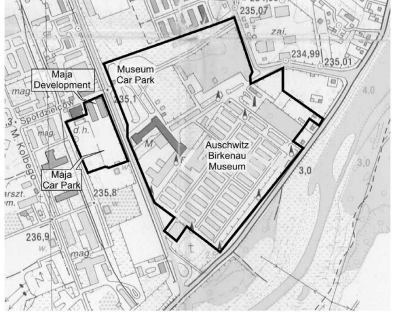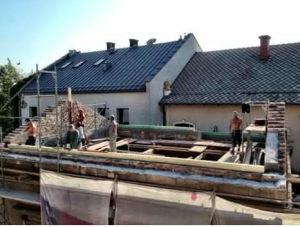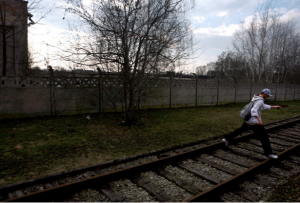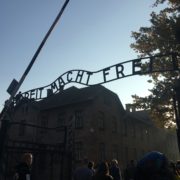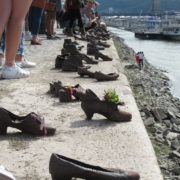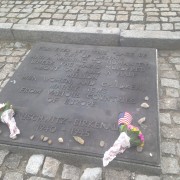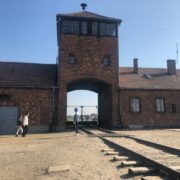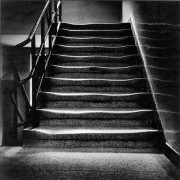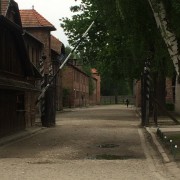70 Years, 9 Months, and 20 Days
By Renata Husted
It has been 70 years, 9 months, and 20 days since the complex of Auschwitz-Birkenau was in use. 70 years, 9 months, and 20 days since the German National Socialist party murdered over 1.1 million people, causing the grounds to be an international symbol of the Holocaust. Since its liberation, the preservation of Auschwitz’s memory and importance in human history has taken the forms of debate, conflicts, and coming togethers. Aspects such as religion, race, tourism, economics, geographical location, politics, and emotion all play a role in the conservation of this piece of land in Poland that now lives in infamy.
It is doubtful that those across the world who are taught about the Holocaust are not taught about the horrors of Auschwitz-Birkenau. It seems the two go hand in hand and you can’t have one without the other. Therefore the fact that the former concentration/death camp is a global concern comes as no surprise. The international protection and importance of Auschwitz-Birkenau is established in several ways; one of the most important and well know is its addition to UNESCO’s world heritage list in 1979. Its addition to the list brings a strong sense of international involvement and awareness. Furthermore, the global community shows it’s support in forming the International Council for Auschwitz-Birkenau Museum established in 1990. The purpose of this council is to bring in different voices and opinions with a singular purpose in mind: maintaining a piece of history. The council had been chaired by former Auschwitz prisoner, the late Professor Władysław Bartoszewski, bringing in a greatly personal viewpoint to the matter. In 2000, Former Polish Prime Minister Jerzy Buzek expressed the importance collaboration plays in the memory of conservation.
“I believe that working together to preserve for posterity the tragic heritage of the Nazi policy of the extermination of the Polish people and the Destruction of the Jewish people will serve the cause of reconciliation and mutual understanding, and that the ongoing cooperation among experts, researchers, and people who enjoy public esteem and trust will contribute to overcoming stereotypes and prejudices by bearing shared witness to the truth about those horrible times.”
While Poland worked across borders on the topic of Auschwitz, it was also faced with work to be done within its own country lines. Because these tragedies took place on Polish soil, it makes sense that Poland has a lot to say (and work out) about the future status of the complex. Specifically in the areas immediately surrounding the museum, there has been some conflict. The town of Oświęcim is like any other town. The residents go about their every day lives, while living almost next door to the former death camp. For them, their town is more than Auschwitz, it’s their home. And like any home, economical development is a crucial part of society and at times can lead to disputes.
Pam Jenoff, in her article Managing Memory dissects the situation and states “The Polish government must respect the delicate balance between state and local authority.” This conversation is seen in the sense of commercial development an historical preservation. This particular aspect of debate is centered around the balance between the economic development of the surrounding community and the maintenance of the atmosphere in Auschwitz. Specifically, in what is known as the “supermarket controversy” Poland’s ability to balance outside stressors was put to the test when in 1995, a company applied to build a shopping center in the protected zones of the complex. This proposal was met with strong objections from the international Jewish community as well as others. Additionally, these objections were heightened when it was made public that almost fifty percent of the company’s investment was owned by Germany. Furthermore, this proposition had been approved by local authorities, while shortly after, the Polish president Aleksander Kwasniewski blocked the project. The controversy ended in a compromise where no supermarket was built, but instead a parking lot and concession stand took its place. This compromise and dialogue between government (local and national) and citizens is an example of the partnership necessary to make progress with all in mind.
It is understandable and easy to see why Auschwitz-Birkenau is part of our shared history. The tragic events happened in Europe, specifically Poland. It happened to Europeans, the majority Jews, but it is part of our universal memory and in return it is universal responsibility to protect the memories and lessons it holds. As Pam Jenoff claims the Auschwitz legacy “ does not merely communicate to the Holocaust survivors and their decedents; it conveys an important message to the perpetrators and victims of oppression worldwide.”

